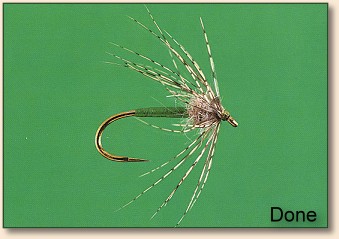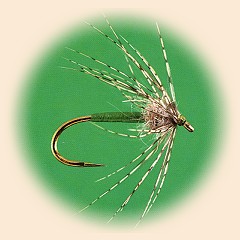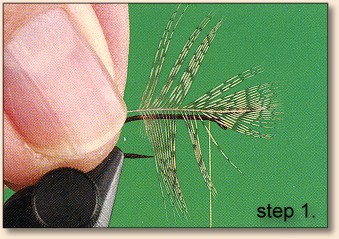
Step 1: Position the thread about 4 wraps behing the
hook eye. Prepare a wet-fly hackle (page.53B) of
partridge, as shown, with barbs about twice the length
of the hook gap.
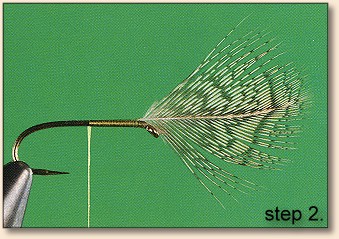
Step 2: Mount the hackle atop the shank as shown, extending
over the hook eye with the back (or dull) side of the
feather facing you. Use a flattened thread (p.42B)
to bind the stem to the midpoint of the shank, creating a
smooth foundation. Clip the hackle stem.
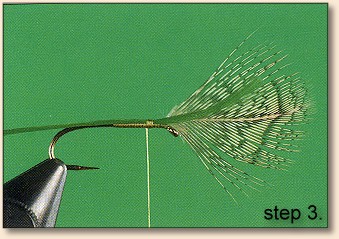
Step 3: Wrap the flattened thread forward, keeping the
foundation slim and smooth. Stop 5 thread-wraps'
distance behind the hackle. Mount a length as shown in
wrapping floss (Step1, p.74B).
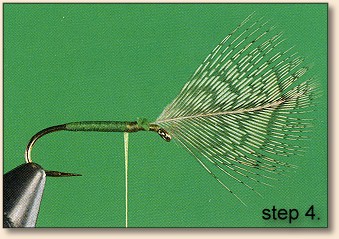
Step 4: Form a slender abdomen as shown in wrapping
floss (Steps 2-8, p.74B). When the tying thread is
reached, secure the floss and clip the excess. Position
the thread about 1/3 of a shank-length behind the hook eye.

Step 5: Use the direct-dubbing method (p.78B) to
form a ball-like thorax that ends about 2 thread-wraps'
distance behind the hackle-mounting point. Position the
thread directly in front of the thorax.
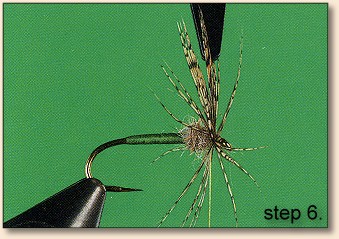
Step 6. Clip the feather in a hackle pliers. Raise it
vertically so that the dull side of the feather faces the
hook bend. Take 2 wraps of the feather rearward,
just as you would wrap a dry-fly hackle (p.146B).
except in the reverse direction.
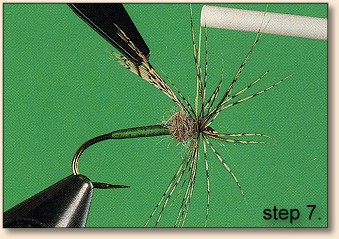
Step 7. Take one wrap of thread over the feather tip,
directly ahead of the thorax.

Step 8: Take 2 thread wraps foward through the hackle
barbs, ending on the bare shank ahead of the hackle.
As you wrap, wiggle the thread from side-to-side to
avoid trapping any hackle barbs. Clip the feather tip,
and finish the fly (p.44B)
